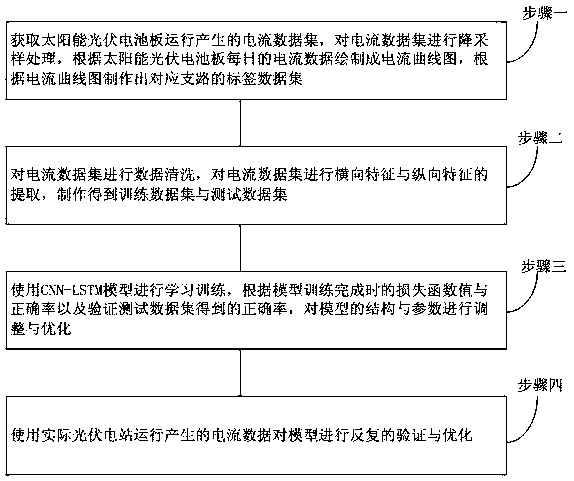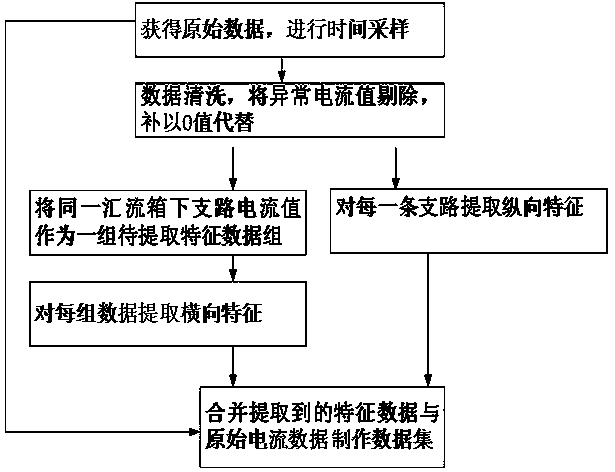Fault detection method for solar photovoltaic cell panels based on deep learning
A photovoltaic panel and fault detection technology, applied in photovoltaic power generation, photovoltaic system monitoring, photovoltaic modules and other directions, can solve the problems of mixed old and new equipment, inapplicability, current data difference, etc., to achieve the effect of fast operation
- Summary
- Abstract
- Description
- Claims
- Application Information
AI Technical Summary
Problems solved by technology
Method used
Image
Examples
Embodiment 1
[0039] The experimental data comes from a photovoltaic energy company in Taiyuan City, Shanxi Province. The basic information of the experimental data is as follows:
[0040] A photovoltaic power station usually consists of sixty areas, each area contains two inverters, one inverter has seven combiner boxes, one combiner box contains fifteen branches, each branch There will be multiple battery panels connected in series, and our data acquisition equipment can collect the current data of the branch circuit at least.
[0041] The data of 3 districts from January to October 2018 of a photovoltaic power station affiliated to an energy company were used for test verification. The data is allocated as the data in the 16th and 17th districts as the training data set, and the data in the 18th district as the testing data set. The data set is made as 28 combiner boxes under 2 districts, 420 branches, and a total of 127,680 data for 304 days for training. The training environment is ...
PUM
 Login to View More
Login to View More Abstract
Description
Claims
Application Information
 Login to View More
Login to View More - R&D
- Intellectual Property
- Life Sciences
- Materials
- Tech Scout
- Unparalleled Data Quality
- Higher Quality Content
- 60% Fewer Hallucinations
Browse by: Latest US Patents, China's latest patents, Technical Efficacy Thesaurus, Application Domain, Technology Topic, Popular Technical Reports.
© 2025 PatSnap. All rights reserved.Legal|Privacy policy|Modern Slavery Act Transparency Statement|Sitemap|About US| Contact US: help@patsnap.com



